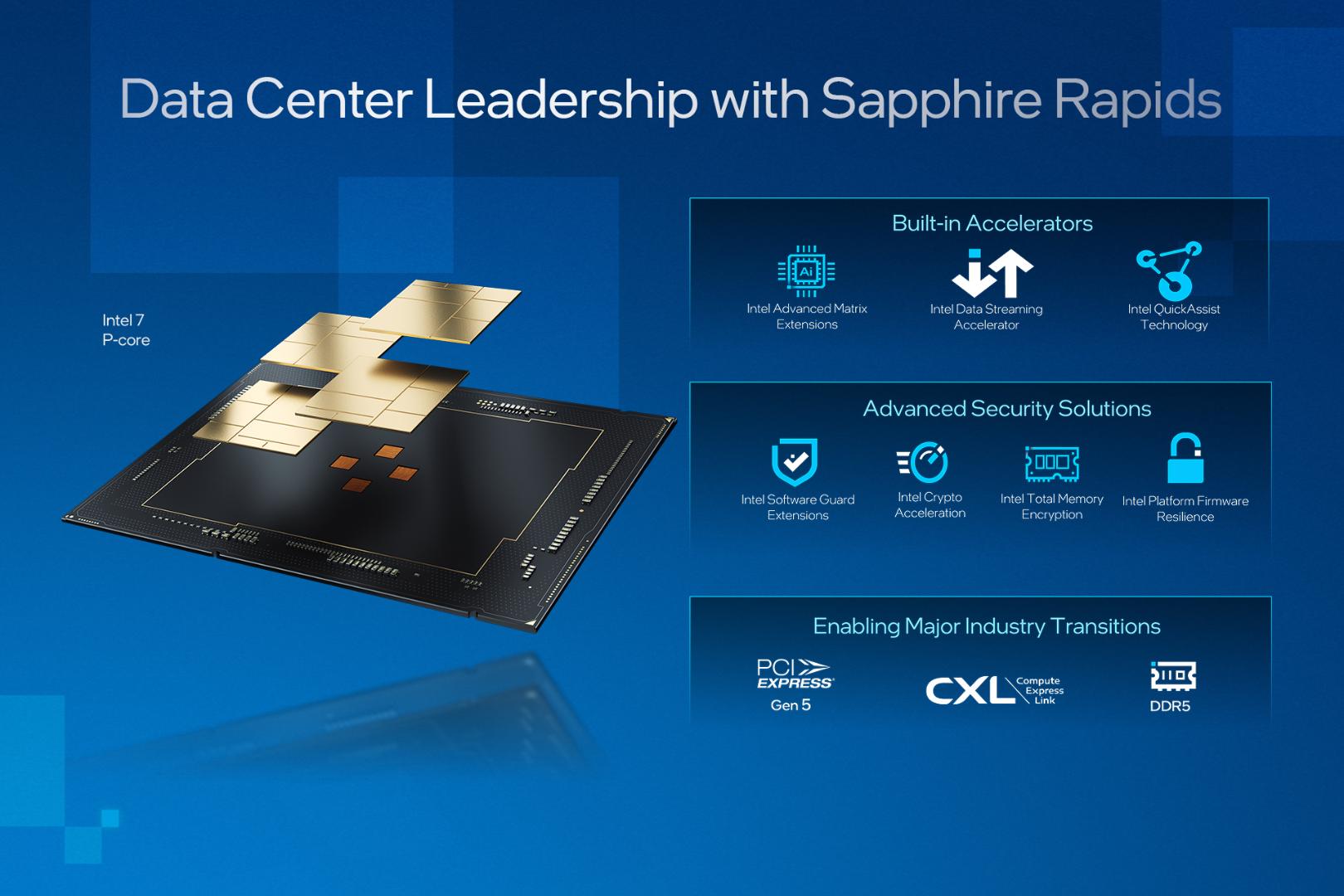Intel wants to dominate data centres – and it has a cunning plan to do so
Intel has revealed ambitious plans to stake a major claim in the data centre chip landscape going forward.
The chipmaker has revealed its multiyear Xeon roadmap for the next few years, which includes the forthcoming Sapphire Rapids, built on Intel’s 7 process, coming in Q1 2022, which it says will boost AI performance by 30x.
This will be followed by Emerald Rapids, also built on Intel 7, in 2023, and Sierra Forest built on Intel 3, in 2024, with the company also planning to move its Granite Rapids offering from Intel 4 to Intel 3 on the same timeframe.
Moore’s Law redux
The various Rapids versions are aimed fairly and squarely at the top of the CPU market, with performance leaps across AI and ML workloads especially.
Sapphire Rapids, especially, is focused on data centres, one of the most important areas of computing right now, as everything switches to being in the cloud.
According to Intel, Sapphire Rapids offers better performance across a multitude of workloads useful to data centres and next month Intel will begin shipping the processor class.

The timeframe for the others – Emerald Rapids, Sierra Forest, and Granite Rapids – are more glacial, which is likely a factor in just how long next-generation technology takes to develop.
Unfortunately for Intel, however, the competition is moving at pace and the company risks being left behind, especially as Amazon begins to explore developing their own silicon for data centres. It’s not all bad news: Intel is working with Google on chips for Google Cloud.
“Today we’re giving the world a clear view of our industry-leading Xeon roadmap, which will fuel our growth and leadership through 2024 and beyond,” said Intel’s Sandra Rivera. “This diversified product portfolio has been developed in tight partnership with our customers, based on their diverse needs, aligned to their timelines and designed to fuel even more innovations with their developer ecosystems.”
All in all, Intel hopes this is a compelling plan to turnaround the company’s sagging fortunes and dominate the growing data centre markets.
Intel has been in a bit of a lull over the past few years. Once the dominant player in computing chips, others have overtaken it: AMD, TSMC, Nvidia, Arm, Apple, the list goes on. Everyone seems to be expanding into making and designing their own chips, many of which are better than Intel’s.
For all the latest Technology News Click Here
For the latest news and updates, follow us on Google News.
